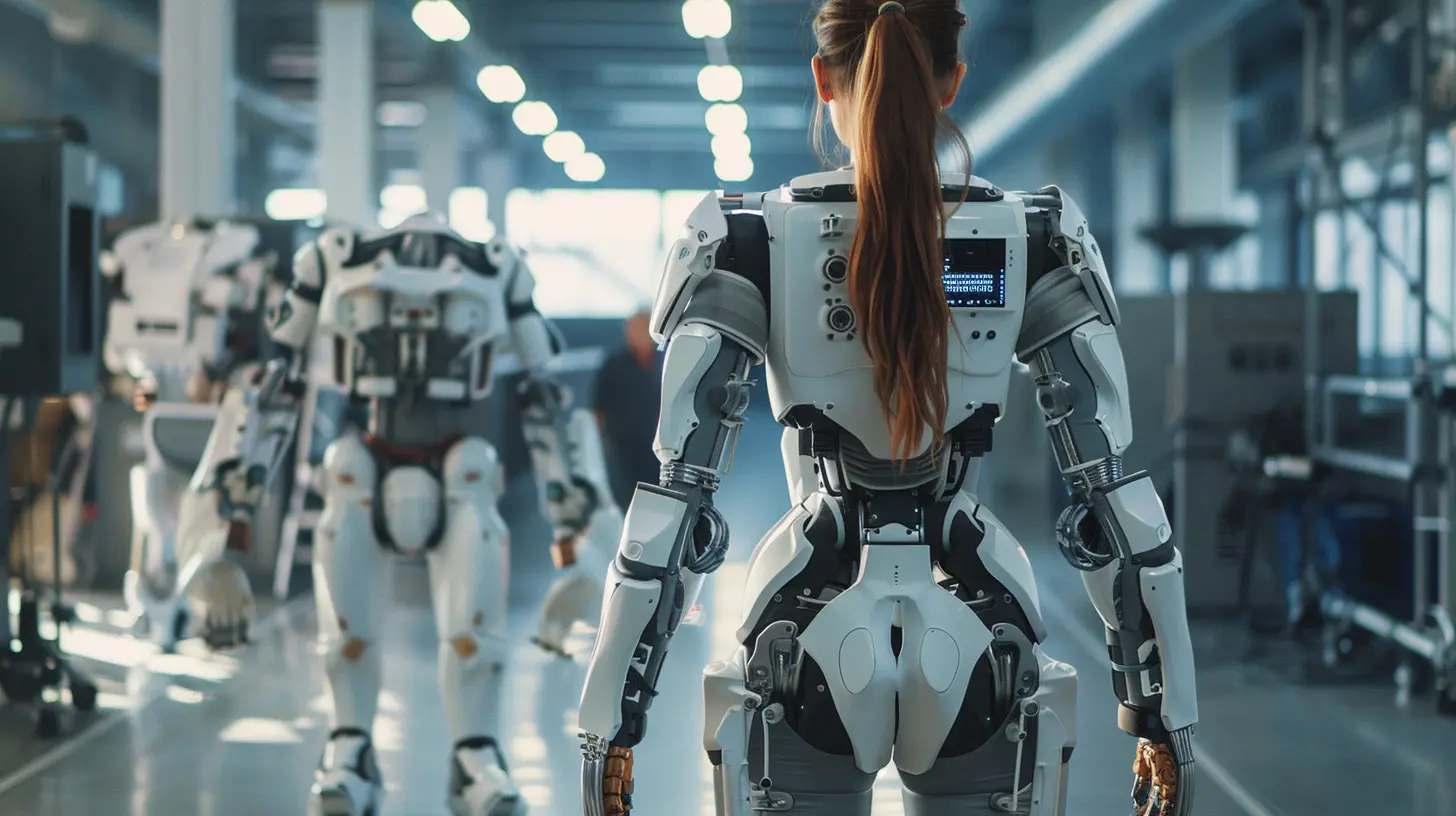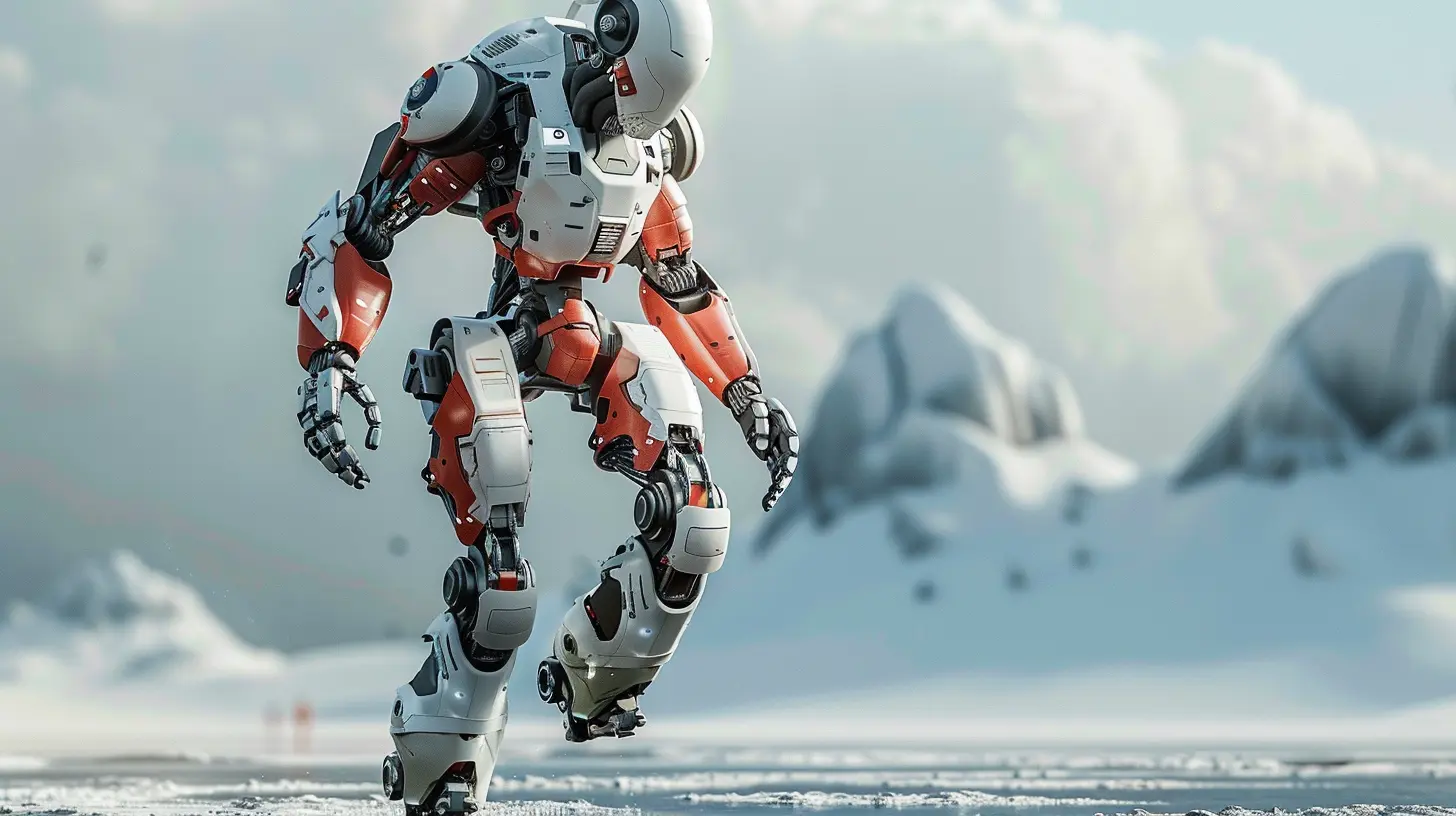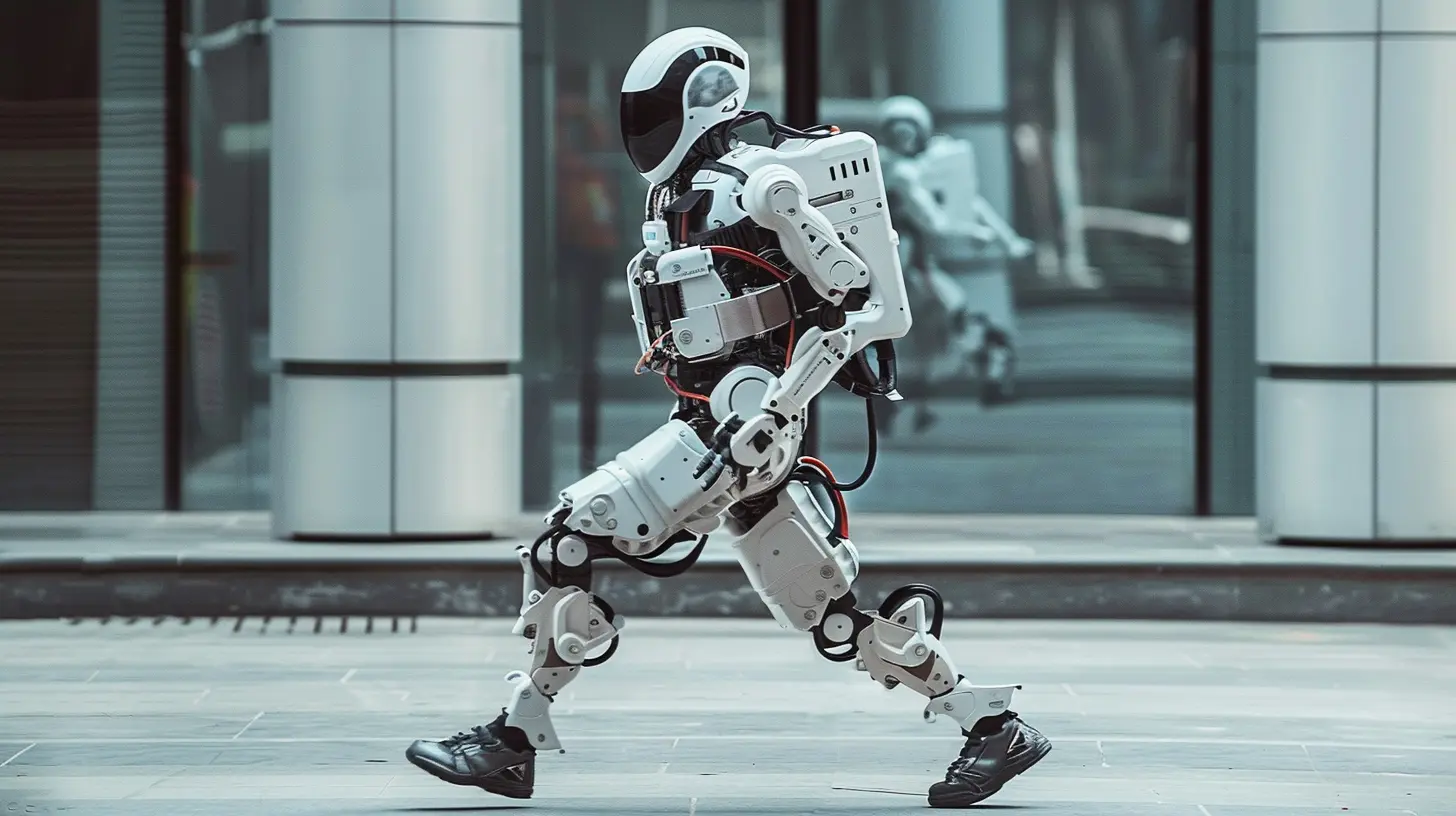Exoskeleton Robots: Augmenting Human Strength and Endurance
22 November 2025
Imagine lifting a 200-pound box with ease or walking for miles without tiring yourself out. Sound like something out of a superhero movie? Well, welcome to the world of exoskeleton robots. These wearable machines are no longer just the stuff of sci-fi—they’re real, they’re here, and they’re reshaping how we think about human strength and endurance.
Whether it's giving warehouse workers superhuman lifting abilities, helping paraplegics walk again, or boosting military performance, exoskeletons are taking center stage in the tech world. But while these robo-suits promise to make us stronger and more capable, they also raise some thought-provoking questions.
So, let’s break it all down—from the tech under the hood to where this is all heading in the near future.

What Exactly Are Exoskeleton Robots?
Let’s start with the basics. An exoskeleton robot (sometimes called a powered exosuit) is a wearable machine that mimics the mechanics of the human body. It straps onto your body and uses electric motors, hydraulics, or pneumatics to amplify your natural movements.Imagine strapping a robotic frame to your legs or arms that moves as you move—only with way more strength and endurance. Some are “passive” and rely on mechanical support, like springs and braces. But the real magic happens with “active” exoskeletons that use sensors and actuators to power your movements.
In short: they make you stronger, last longer, and, sometimes, even help you walk when you otherwise couldn’t.

The Rise of Robotic Muscle
You might be wondering—why now? Why are exoskeletons suddenly popping up everywhere from factories to hospitals?Well, thanks to leaps in robotics, sensor technology, and battery power, we’re now at a point where creating a wearable robot that works with the human body is actually possible. These suits aren’t bulky, clunky metal rigs anymore. Some are sleek, lightweight, and even stylish (yes, really).
Companies like Sarcos Robotics, Ekso Bionics, Cyberdyne, and SuitX are leading the charge. Their creations are already used in industries like construction, manufacturing, military, and healthcare—all with one goal: to extend human capability beyond natural limits.

Powering the Human Body: How Do Exoskeletons Work?
Let’s geek out for a second. Underneath the sleek design of a modern exosuit lies an intricate system of sensors, control algorithms, and actuators.Sensors and AI
These babies are smart. Exoskeletons use sensors to monitor your motion in real-time. They detect when you're about to lift something or start walking, and the AI responds by activating motors or hydraulics instantly.Actuators and Power Systems
Think of actuators as artificial muscles. They do the actual movement—lifting, extending, or stabilizing your limbs. Most of them are powered by electric motors or hydraulic systems. But here’s the catch: power supply is still a huge challenge. Batteries need to be lightweight but powerful enough to last a full shift, which is easier said than done.Human-Machine Interface
This is where it gets cool. Some exoskeletons come with intuitive controls—joysticks, voice commands, or auto-response systems that adapt to your natural movements. You barely notice the machine doing the work; it feels like an extension of your own body.
Applications: More Than Just Fancy Gym Equipment
Alright, so who actually uses these things? Spoiler alert: it’s not just Iron Man wannabes or people training for the next Ninja Warrior.Industrial Use: Back-Saving Tech
If you've ever done manual labor, you know how brutal it can be on your back and joints. Exoskeletons are becoming a game-changer in industries like automotive and logistics. Workers can lift heavy parts or hold tools overhead for hours without crashing down from fatigue.Major companies like Ford and Toyota are already deploying exosuits on factory floors to reduce workplace injuries and improve efficiency.
Military and Defense: Super Soldiers?
Yep, the military is in on it too. Exoskeletons can help soldiers carry heavy gear over long distances, stabilize weapons for better accuracy, and reduce fatigue in combat zones.DARPA (the same agency that basically invented the Internet) has been funding high-tech exo projects aimed at creating the next generation of soldiers—think Captain America without the serum.
Medical & Rehabilitation: Walking Again
This one’s close to the heart. For people with spinal cord injuries or neurological disorders like MS or stroke, exoskeletons offer a chance to walk again. Literally.Medical exosuits from companies like ReWalk and HAL are being used in hospitals and clinics to help patients rebuild strength, retrain their brains, and even regain partial mobility.
Everyday Augmentation: Not Far Off
What if you could buy a personal exosuit at Best Buy someday? It’s not as far-fetched as you think. Research is underway to develop lightweight, affordable suits for aging populations and people with mobility issues. Instead of a cane or a walker, imagine having a robotic pair of legs helping you climb stairs or walk around the park.The Benefits: Why Everyone’s Buzzing About Exoskeletons
It's not all hype. These robo-suits come with some serious perks.- Injury Prevention: Less strain on muscles and joints means fewer workplace injuries.
- Boosted Productivity: Workers can do more, faster, and with less downtime.
- Mobility for the Disabled: People with limited mobility can regain independence.
- Military Edge: Enhanced endurance and strength give soldiers a tactical advantage.
From a business angle, fewer injuries and higher productivity mean companies save big on healthcare and insurance costs.
The Challenges: It’s Not All Smooth Sailing
But let’s be real—it’s not perfect. Like any emerging tech, exoskeletons face their share of hurdles.Weight and Comfort
Some exoskeletons are still, well… clunky. Wearing a 30-pound frame for 8 hours straight isn’t exactly glamorous. Engineers are working on making them lighter, more breathable, and ergonomic, but we’re not 100% there yet.Battery Life
Remember we talked about power? Yeah, lugging around a power-hungry suit means you’re also carrying batteries. Finding a balance between weight and endurance is still tricky.Cost
Quality exoskeletons can run into tens of thousands of dollars. That’s a big ask for small businesses or individuals. Prices are coming down, but we’re not quite at the consumer-grade level yet.Ethical & Social Concerns
There’s also a deeper conversation to be had. If some workers get robotic suits and others don’t, does that widen the inequality gap? What about job displacement? And who’s responsible if a powered suit malfunctions and causes an injury?The Future of Human Augmentation
Here’s where things get really exciting. Exoskeletons are just the beginning. Imagine pairing one with brain-computer interfaces (BCIs), so you control your suit with just your thoughts. Or integrating sensory feedback, so you not only move but feel like it's truly your own body.Researchers are even exploring soft exoskeletons made from flexible materials rather than rigid frames. They could be worn under clothes like high-tech spandex, offering support without the bulk.
And with advancements in AI, future suits could learn your habits, predict your movements, and adapt in real-time—kind of like a robotic version of muscle memory.
Are Exoskeletons the Next Big Thing?
Short answer? Yeah, probably.They may not turn us into Iron Man overnight, but they’re definitely unlocking abilities we’ve only dreamed of. From helping people walk again to transforming how we work and fight, exoskeleton robots are redefining what the human body can do.
But like any tool, it's all about how we use it. Will we adopt exosuits to uplift workers and empower the disabled? Or will we create new inequalities and dependencies? That part’s still up to us.
So the next time you see a video of someone lifting a crazy-heavy object while strapped into a robotic suit, don’t just think, “Cool!” Think about the massive shift that's quietly unfolding in the background. Because this isn’t just about robots—it’s about redefining what it means to be human.
all images in this post were generated using AI tools
Category:
RoboticsAuthor:

Marcus Gray
Discussion
rate this article
1 comments
Azriel Wilcox
Exciting advancements! Exoskeleton robots are truly transforming the way we think about human strength and endurance. Can't wait to see what's next!
November 23, 2025 at 4:54 AM

